TOF vs BOF Blog Post Content: What's The Difference?
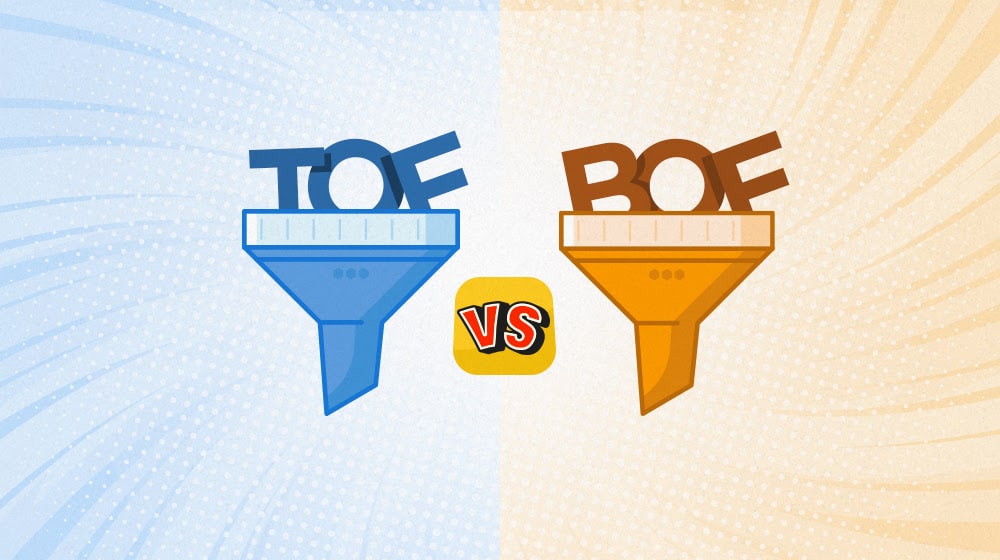
Sometimes, it feels like I harp on some of these subjects more than average, but as an expert content marketer, I believe there's an important amount of nuance to blogging that goes beyond simple keyword and topic choice. Things like buyer intent are critical to make sure those topics match up with the reasons why people are looking for them.
Another important consideration is the stage of the funnel you're working with. There's a lot of difference between content from the initial awareness stages of the sales process and content from the almost closed-the-deal stage of the process. The things people are interested in and the details they care about can be very different.
Now, there's a scale here. It's often not linear, and it's difficult to break down the "sales funnel" into distinct stages. There's always blurring around the edges. Some people progress through a sales funnel very quickly, while others spiral around it like one of those mall coin donation games.
The Purpose of TOF Content
What does that mean?
People at the top of your sales funnel are people who either have no idea who you are or what you do or may have some passing knowledge but otherwise aren't necessarily aware of you, your products, your brand, or even the industry, niche, or specific problem you solve.
When you're targeting these people, you're reaching them with the broadest, most general content you can create that is still useful and relevant to your brand or products.
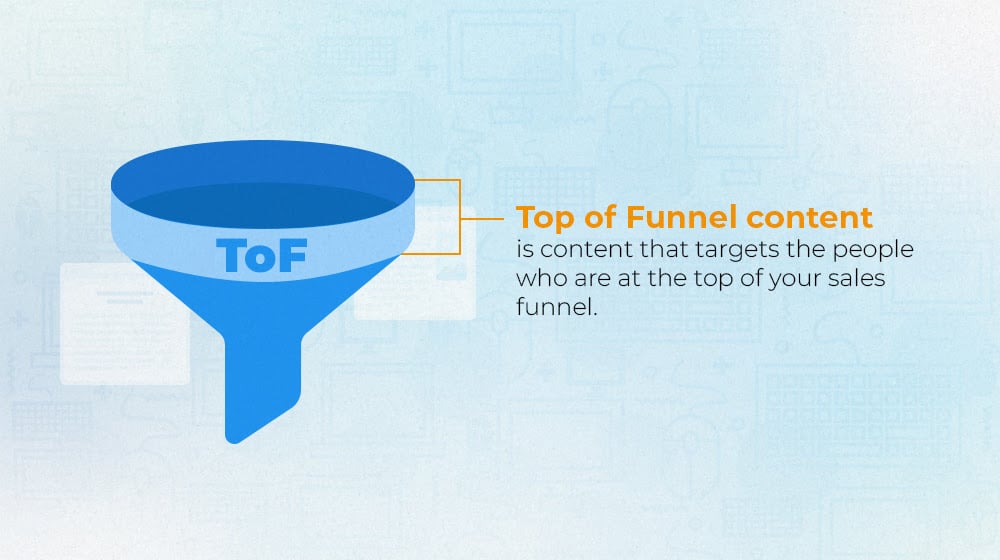
Let's say that you're creating content for a mattress company. The company sells mattresses, bed frames, linens, pillows, and other accessories.
Now, you might think there isn't much for the top of the funnel here. After all, everybody sleeps, right? It's not like you need to write "what is sleep" or "what is a mattress" articles to attract people.
Instead, you want to focus on broad aspects of where a mattress or other sleep accessories come into play. Topics might include things like:
- The importance of a good mattress
- The hazards of a bad mattress
- The basics of sleep hygiene
- The pros and cons of pajamas
- Different types of pillow shapes and their benefits
- Different types of thread count and material for linens
Everyone sleeps, but not everyone sleeps well. Many people have problems with restless sleep, uncomfortable sleep, poor quality sleep, or other life problems that are exacerbated by poor sleep. Those people may seek out information about things related to sleep.
Your goal is to bring those people to your site. Sure, they could read about thread counts on the Wikipedia page for textile measurements, but they'll likely get better and more relevant information from a sleep-focused brand. Or, of course, a Reddit thread, but you can always make that thread yourself and link to your own site for more information.
The goals of TOF content are:
- To establish yourself as an authority in your space, build a reputation, and grow your site through backlinks, traffic, and EAT metrics.
- Provide broadly useful general content and resources that can be used as linkbait for other websites to link to you for further growth.
- To reach people in the top stages of search intent: primarily informational in nature. You're educating people, not selling to them.
Generally, your goal is to inform people of the basics of various concepts in your industry. You've likely heard the phrase "you don't know what you don't know" before, right?
Well, the point of TOF content is to educate and inform people of what they don't know. How many people go through life never realizing that the quality of their mattress, their sheets, or their pillows makes a huge difference? How many people never think about how many associated issues they could solve through better sleep?
The people you're reaching here generally aren't in the mindset or the position to make a purchase. They're only just now discovering that they have a problem, let alone that there may be solutions to that problem. Laying on the sales pressure can turn away people who might otherwise build trust in your brand.
What Happens if You Slack on TOF Content
So, what happens if you slack off on the TOF content and just don't make it?
Mostly, your site will struggle to grow organically. TOF content is the most important content for organic SEO. It's what people link to when they need to talk about a concept you cover. It's what builds your brand reputation. Without it, you don't build backlinks, you don't rank well in organic search, and you don't build authority and trust.
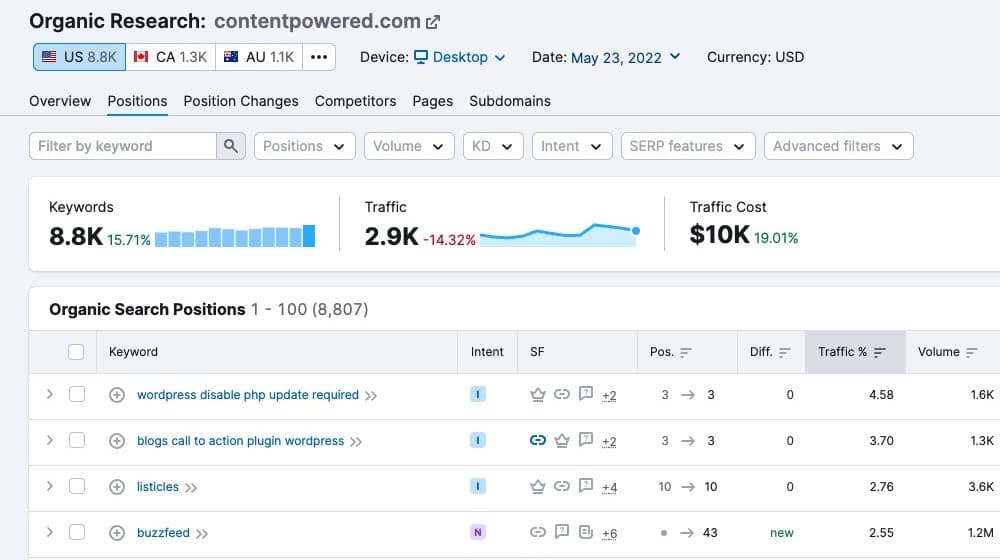
You can still run a site without TOF content. It's just going to be much harder and, critically, much more expensive. That's because your primary way of getting inbound traffic will be from paid ads, leading to landing pages.
That can be effective if you know how to use PPC ad systems very, very well, and you have a compelling pitch, a great idea of who to target, and all the stars align right to let you be successful. But, of course, the moment you stop spending on those ads, you might as well close down the business.
How to Craft Great TOF Content
TOF is difficult to make.
By necessity, you're generally trying to cover broad, generic, industry-wide topics. Our hypothetical mattress company covering things like thread count and sleep disorders has to compete with dozens or hundreds of other brands and entities covering those same topics. Some of those are going to be big-name brands like Sealy or Serta. Others might be hugely reputable sources like the Mayo Clinic for sleep disorders.
My advice is to use the content cluster and pillar (10x) methods.
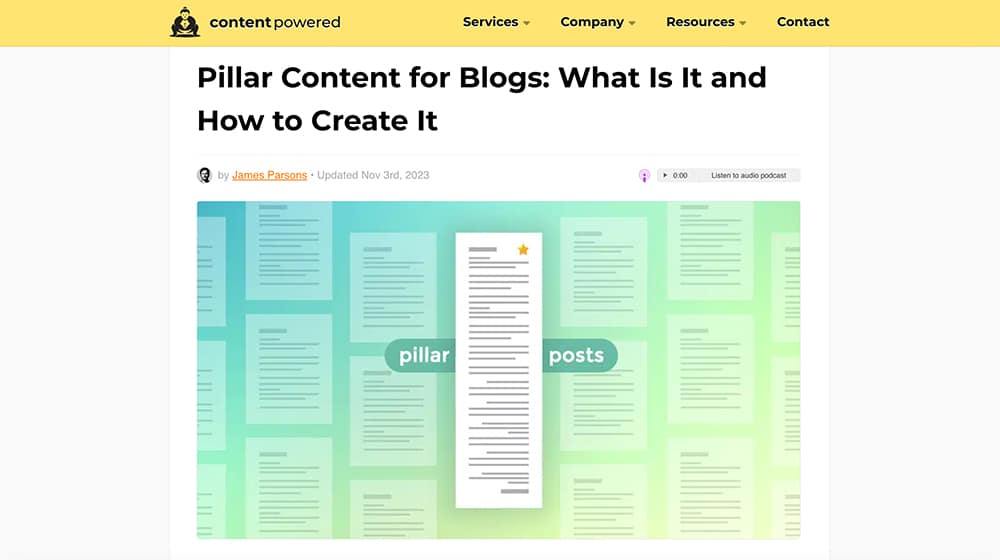
Content clusters are groups of pieces of content that are all interrelated, cross-link to one another, and cover a topic in great detail. Generally, they're clustered around one piece of pillar content. For example, you might have one central topic about sleep hygiene and then spin-off topics about specific aspects of it, such as the importance of a consistent bedtime, how to improve your ability to fall asleep quickly, how to structure your bedroom for the best quality sleep, and so on.
Pillar content, meanwhile, is the central piece of content around which the rest of the cluster is, well, clustered. I try to follow the 10x method when I make pillar content. The 10x method is to take a look at the other content out there that you'd primarily be competing with and try to make your own version ten times (10x) better than what is already out there. That doesn't mean 10x longer, but it can be somewhat longer while also either being broader, deeper, or both. It just needs to be comprehensively better.
We create blog content that converts - not just for ourselves, but for our clients, too.
We pick blog topics like hedge funds pick stocks. Then, we create articles that are 10x better to earn the top spot.
Content marketing has two ingredients - content and marketing. We've earned our black belts in both.
Generally, the pillar content you create is your TOF content, and the sub-topics can be spun off into more focused content for the middle of the funnel. These can focus a bit more on why the issues matter and how they can be solved, as well as target the DIY and consideration intent searches. They still aren't deeply sales-focused, but they're trending in that direction, letting people know you aren't just an informational resource but a brand selling a solution as well, even if they aren't ready to consider buying a solution.
The Purpose of BOF Content
Now, let's skip all the way down to the other side of the pyramid, to the bottom of the funnel.
Usually, they already at least recognize your brand, and while they may not trust you to not be misrepresenting your products, they at least don't fear you're a scam or fraud.
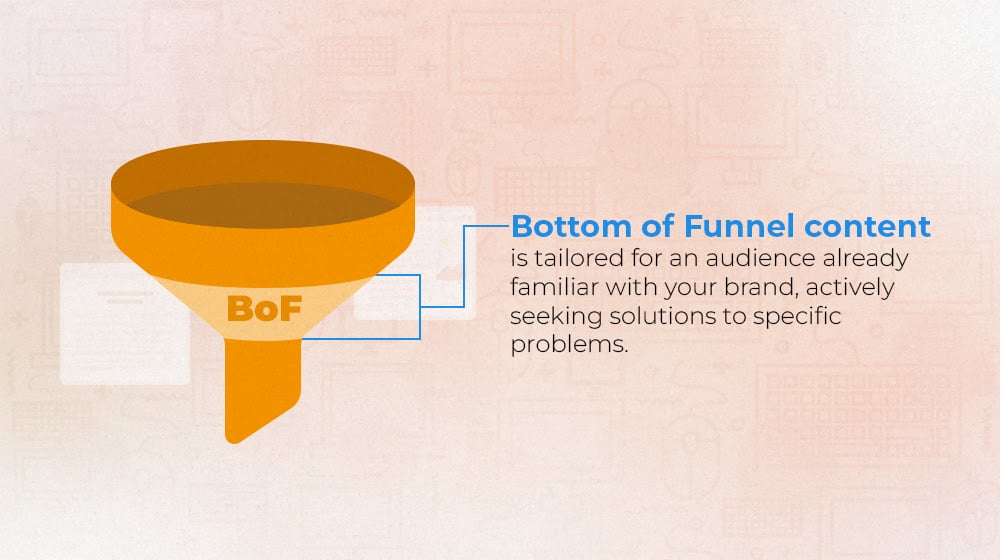
Going back to search intent, this is where you're aiming at people with consideration, commercial, and transactional intent. Obviously, the people who Google search for "buy BrandName product" are already a slam dunk, but the people who are still researching possible solutions need a bit more convincing, and that's where BOF content comes in.
The broad, general purpose of BOF content is to convince people that you're trustworthy, that your products can do what you claim they can do, and, most importantly, that they can solve the problems that your potential customers are having.
For our mattress company example, BOF content is content that compares ten of the top mattresses and explains what their pros and cons are (with yours coming out on top, of course).
What Happens if You Slack on BOF Content
So, what happens if you slack off on creating BOF content and just don't make it?
You'll have trouble sealing the deal.
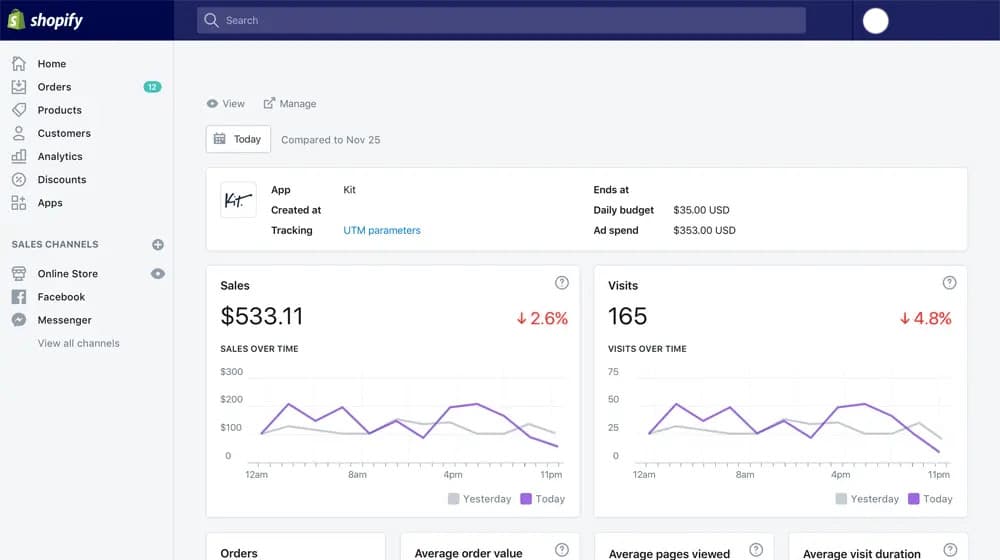
You're an informational resource, sure. You might even be able to make some decent money through affiliate links and referral programs. But, if you have products to sell, you aren't going to be selling them.
In extreme cases, people might not even realize you have products to sell. Even if you have a clear store link, your visitors might not even think to click it. I've known a few businesses that are allergic to self-promotion and fall into this trap.
The bottom-of-the-funnel content is also important for building trust not just as a thought leader but as a vendor. It's one thing to be trusted to know what you're talking about and quite another to be trusted to sell quality products.
How to Craft Great BOF Content
BOF content comes in two forms.
Blog post content is the rarer kind of BOF content. Most people searching Google for a topic that would fall into BOF content would be better served with a different kind of content.
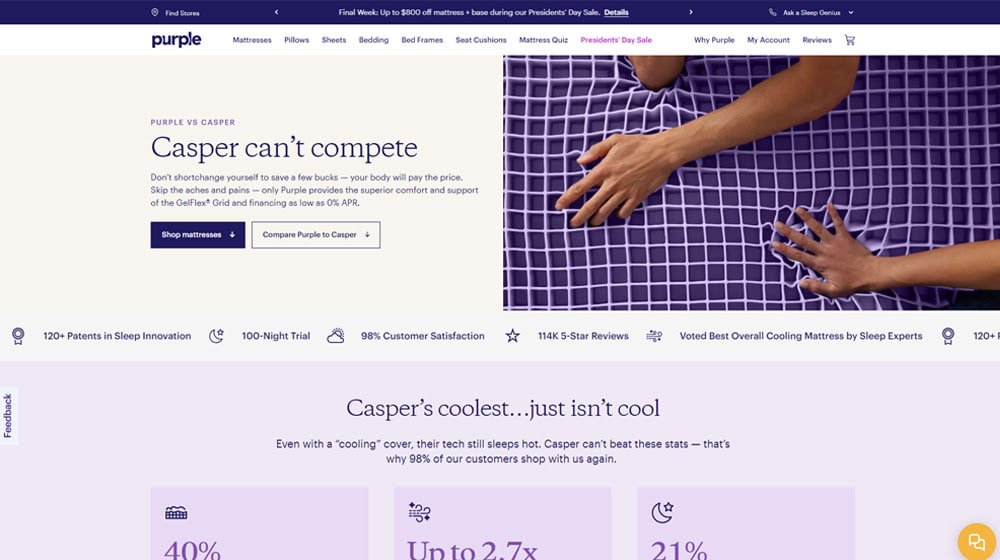
So, BOF content more commonly takes the form of:
- Product pages with detailed item descriptions and tangible facts.
- Product comparison pages that show you directly compared with your biggest competitors (like this).
- Case studies that back up and prove your claims.
- User testimonials and reviews.
- Landing pages for advertising and off-site marketing campaigns.
You can also create BOF content that is more heavily sales-focused than your average piece of content. Contrary to popular belief, Google doesn't actually hate or penalize when you have very sales-forward content; they just hate it if that's all you have.
This is where you're leveraging things like social proof and all of those other implicit trust indicators. You're trying to get people who are aware of their problems to trust you when you say you're the solution.
Putting the Pieces Together
I often say that a piece of content is more than just a pile of words with a keyword focus. Every piece of content is a gear in a complex machine that is your overall marketing apparatus. This is also why I say that keyword lists aren't one-and-done resources. The same keyword can be used to target multiple different user intents and stages in the sales funnel with no overlap, so you don't end up with SEO cannibalism or duplicate content.
For each keyword and topic, consider where the user is coming from and what you can do for them at each stage of the funnel.
Some keywords are better suited for TOF content, others for BOF content. Still others can be used for both. Don't waste the opportunity; make both kinds of content.
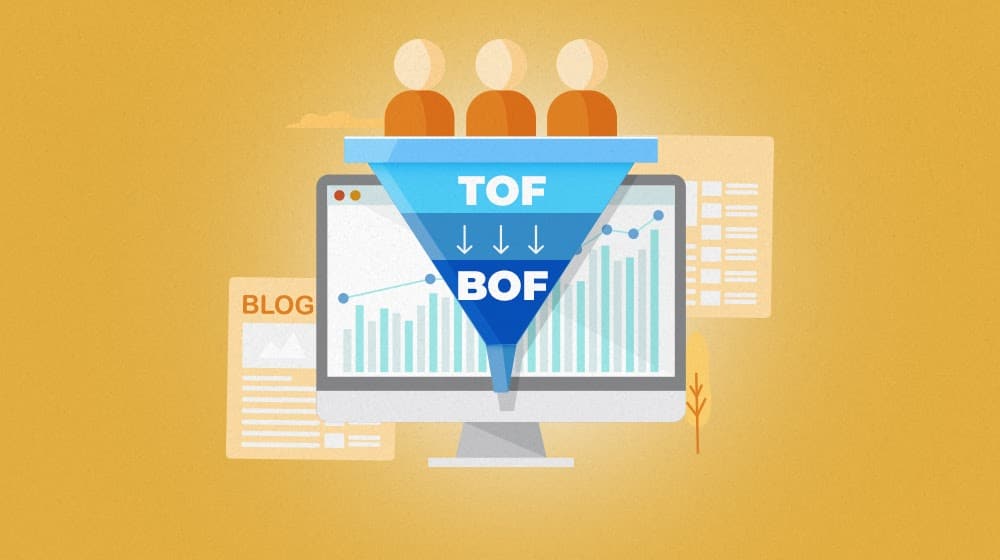
That's the kind of robust attention to detail I bring to my content marketing efforts. If you're interested in seeing it in action for yourself, check out my services and give me a call.
I'd love to talk about what I can do for you and your business!






Comments